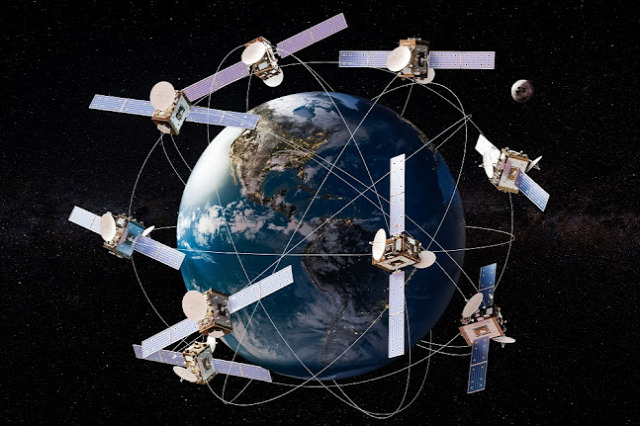Utility-terrain vehicles (UTVs), all-terrain vehicles (ATVs), and golf carts are becoming more common in a variety of applications globally. The vehicles' versatility in terms of terrain operation and quick movement within the neighborhood has boosted their appeal. In the past, riders of ATVs, UTVs, and golf carts have used them for sports and recreation, riding through numerous natural parks and hiking trails. Additionally, it is beneficial in a variety of settings, such as warehouses, freight yards, and agriculture. Furthermore, as vehicle technology has advanced, more ATVs, UTVs, and golf carts are using electric drivetrains.
The global electric ATV, UTV, and golf cart market is projected to reach $6.81 billion by 2032 from $1.23 billion in 2022, growing at a CAGR of 18.65% during the forecast period 2023-2032.
The expanding range of uses for electric ATVs, UTVs, and golf carts is a result of rising EV safety standards, rising consumer demand for improved driving experiences, and EVs' low maintenance costs. Additionally, governments and federal agencies are spending a lot of money on infrastructure improvements, subsidies, and the promotion of electric vehicles in order to minimize carbon dioxide emissions, which is driving up the demand for electric ATVs, UTVs, and golf carts.
Electric drivetrains were first utilized in low-speed vehicles, which were later used in a variety of settings, including hotels, golf courses, and other leisure locations. As vehicle battery technology advances to increase the range and charging efficiency of the vehicle, the usage of the electric drivetrain in further applications of ATVs, UTVs, and golf carts, such as sports, utility, and military, will increase.
Recreational Applications to Dominate Global Electric ATV, UTV, and Golf Cart Market (by Application)
Professional sports, recreational, agriculture and utility, and military and defense are among the most common applications for electric ATVs, UTVs, and golf carts. Electric ATVs and UTVs are vehicles that are made to meet the off-road requirements of users in challenging terrains, such as sandy areas, meadows, and mountain trails. Recreational ATVs and UTVs, which are mostly used for camping, off-roading, hunting, and fishing, are growing in popularity for leisure, recreation, and tourism applications. The use of electric ATVs, UTVs, and golf carts is expected to rise as battery technology develops and EV range and load capacity increase.
Four-Wheel Drive (4WD) Drivetrain Type to be Dominant in Global Electric ATV, UTV, and Golf Cart Market (by Drivetrain Type)
Two-wheel drive (2WD), four-wheel drive (4WD), and all-wheel drive (AWD) are the three most common drivetrain configurations for electric ATVs, UTVs, and golf carts. According to powertrain type, four-wheel drive (4WD) is highly sought after globally. 4WDs have a wider range of application usage than their counterparts and are typically in higher demand. Compared to a 2WD vehicle, 4WD vehicles can traverse rugged terrain, steep hills, and deep water with ease. Driving on slick winter roads, through mud, and on loose surfaces such as sand is better suited for 4WD vehicles.
Battery Electric Vehicles to Dominate the Global Electric ATV, UTV, and Golf Cart Market (by Propulsion Type)
Hybrid electric vehicles (HEVs) and battery electric vehicles (BEVs) are the two subsegments of the global electric ATVs, UTVs, and golf cart market (by propulsion type). BEV usage has expanded as a result of developments in battery technology, government regulations requiring more fuel-efficient vehicles, and the fact that BEVs are entirely powered by their battery systems. BEVs with either lead-acid or lithium-ion batteries have been introduced by a number of well-known electric ATVs, UTVs, and golf cart manufacturers. BEV sales are anticipated to rise in comparison to HEV sales, which are predicted to drive market growth as a result of the declining cost of pure EVs and the development of EV infrastructure in many countries.
Request A Free Detailed Sample on Electric ATV, UTV and Golf Cart Market!
Two-wheel drive (2WD), four-wheel drive (4WD), and all-wheel drive (AWD) are the three most common drivetrain configurations for electric ATVs, UTVs, and golf carts. According to powertrain type, four-wheel drive (4WD) is highly sought after globally. 4WDs have a wider range of application usage than their counterparts and are typically in higher demand. Compared to a 2WD vehicle, 4WD vehicles can traverse rugged terrain, steep hills, and deep water with ease. Driving on slick winter roads, through mud, and on loose surfaces such as sand is better suited for 4WD vehicles.
North America to Hold the Largest Share in Global Electric ATV, UTV, and Golf Cart Market (by Region)
The electric ATV, UTV, and golf cart market is currently dominated by North America. The presence of significant electric ATV, UTV, and golf cart manufacturing OEMs and tier 1 companies, as well as government regulations, technological advancements, sizeable investments in specialized research and development (R&D) facilities, a variety of natural parks and hiking trails, and a variety of ATV and UTV racing competitions, are some of the key factors boosting the market's growth in the region.
Competitive Landscape
Major electric ATV, UTV, and golf cart manufacturers are undertaking a variety of strategic efforts to gain market share.
The following are some key highlights in terms of major electric ATV, UTV, and golf cart manufacturers:
-
Polaris Inc., Club Car LLC, E-Z-GO, and HISUN Motors Corporation are some leading players globally.
-
DRR USA, Suzhou Eagle Electric Vehicle Manufacturing Co., Ltd, Columbia Vehicle Group Inc., and Volcon are some emerging companies.
-
The launch of a new product has been the most preferred strategy in recent years.
-
Expanding business and partnerships and collaborations are the other strategies being implemented.
Most players have tie-ups with various EV tier-1 suppliers for e-motors and batteries.




